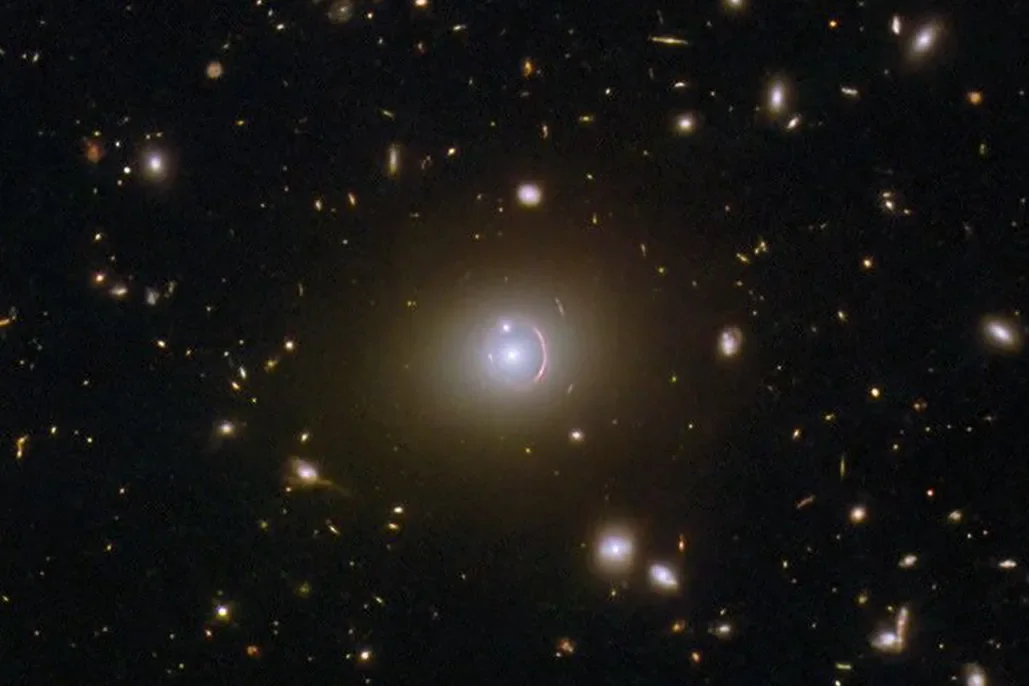
Hubble Captures Stunning Einstein Ring: A Glimpse 11 Billion Years Into the Past
The Hubble Space Telescope has captured a breathtaking image of an Einstein ring, a rare cosmic phenomenon where light from a distant galaxy is warped into a near-perfect circle by the gravity of a closer galaxy. This discovery, detailed in recent reports from NASA and BBC Sky at Night Magazine, offers a unique window into the early universe, revealing galaxies as they existed 11 billion years ago.
This spectacular alignment, known as gravitational lensing, provides astronomers with invaluable data about the distant and foreground galaxies involved, as well as insights into dark matter.

Einstein's Theory Confirmed
The Einstein ring vividly illustrates Einstein's General Theory of Relativity. A massive object, in this case, the foreground galaxy SDSS J020941.27+001558.4, acts as a lens, bending and magnifying the light from a more distant galaxy, HerS 020941.1+001557. When the alignment between the distant galaxy, the lensing galaxy, and Earth is just right, the light forms a complete or partial ring – an Einstein ring. According to NASA, the distant galaxy appears as a red arc partially encircling the foreground elliptical galaxy.
A 19.5 Billion Light-Year Journey
The light we see from HerS 020941.1+001557 began its journey 11 billion years ago, but it has traveled a staggering 19.5 billion light-years to reach us. This is because the universe has expanded significantly during that time. This magnified view allows astronomers to study the early universe, a time when galaxies were forming and evolving.
Citizen Science Plays a Role
The discovery wasn't solely attributed to professional astronomers. The Einstein ring was initially spotted through SPACE WARPS, a citizen science project that encourages volunteers to search astronomical images for gravitational lenses. This highlights the increasing importance of public participation in scientific discovery.
More Than Just a Ring
Interestingly, this particular Hubble image features not just two, but three galaxies. A third galaxy, SDSS J020941.23+001600.7, intersects the red arc, adding complexity to the image and providing even more data for astrophysicists studying dark matter, spacetime curvature, and the intergalactic medium.

Unlocking Cosmic Secrets
Einstein rings are more than just visually stunning phenomena. They provide invaluable tools for understanding the universe. By studying how light is bent, astronomers can learn about the mass and distribution of dark matter in the foreground galaxy. These observations help refine models of the universe's expansion and the formation of cosmic structures.
A Continuing Journey
The discovery and understanding of gravitational lensing have evolved significantly over time. Early misinterpretations of similar arcs as massive celestial structures have given way to sophisticated models and simulations. Each new Einstein ring discovery helps refine our understanding of the cosmos.
What other cosmic secrets will these magnificent Einstein Rings reveal about the universe's past and future? Share your thoughts and theories in the comments below!